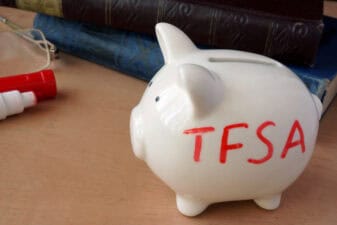Life is full of surprises. Unfortunately, those surprises can be costly.
Anyone who’s experienced a sudden job loss, or a weather disaster, or a surprise medical bill knows that having an emergency fund isn’t just a suggestion. It’s a necessity.
While how much you ultimately set aside for emergencies is important, where you put that money is just as important. And when it comes to emergency funds, typically, the best places are the most accessible.
Of course, your emergency fund could be a hefty sum — so hefty, in fact, that you might be tempted to invest your emergency fund in stocks or mutual funds. But should you? No. Investing your emergency fund is a bad idea. Here’s why.
Why it’s a bad idea
An emergency fund is an account of easily accessible savings that you use only for emergencies, such as losing your job, incurring a medical bill, or covering major damage to your home or car.
The keyword there is easily accessible. You don’t want this money wrapped up in investments or illiquid accounts, such as stocks, funds, or even GICs. If you have an emergency, you want to be able to withdraw this cash in an instant.
But wait — aren’t stocks fairly liquid? Can’t you sell your stocks when you need money?
In a sense, yes. You can sell most stocks for cash when you need the money. But stocks are volatile, meaning their values can go and down fairly quickly. Though the value of stocks tends to go up over long periods of time, they can decrease rapidly over the short term. And nothing guarantees that you’ll be able to withdraw emergency cash when the value of your stocks has gone up.
If the opposite occurs, if you need cash when the market has taken a beating, you might have to sell your stocks for a loss. That means you could have a much smaller emergency fund to work with, which isn’t a great place to be in when you need emergency cash.
Where should you put your emergency fund?
Stocks are a risky place to keep your emergency fund. So, where should you keep? Let’s look at some accounts that allow you to withdraw money quickly while also helping it grow.
1. High-interest savings account
A high-interest savings account (HISA) is probably the best place to keep your emergency fund. Though interest rates often change, some of the best HISAs range from 1% to 3%.
As you’re looking around for a HISA, pay close attention to the fees on the account. Check to see if your HISA has any annual or transfer fees. The best HISAs will offer no fees, no minimum deposits, and unlimited withdrawals.
That last one is important. Some HISAs restrict how much money you can withdraw a month. That pretty much defeats the purpose of an emergency fund. At the very least, make sure your HISA has unlimited withdrawals or a withdrawal limit that is larger than your emergency fund.
2. Savings account
The most plain vanilla of our options, savings accounts, offer low interest rates but easy access to money. You can open savings accounts at nearly every bank and financial institution in Canada. Unlike some HISAs, you don’t have to worry about paying fees or withdrawal limits.
3. TFSAs
Tax-Free Savings Accounts (TFSAs) are government-sponsored accounts that allow your contributions to grow tax free. You contribute after-tax dollars (money you’ve already paid taxes on), and any earnings won’t be subject capital gains taxes.
Many TFSA providers allow you to open a HISA inside of your TFSA, giving you the best of both worlds, both tax-free earnings and high-interest yield. Keep in mind: TFSAs have annual contribution limits (exceeding the limit will result in a penalty).


